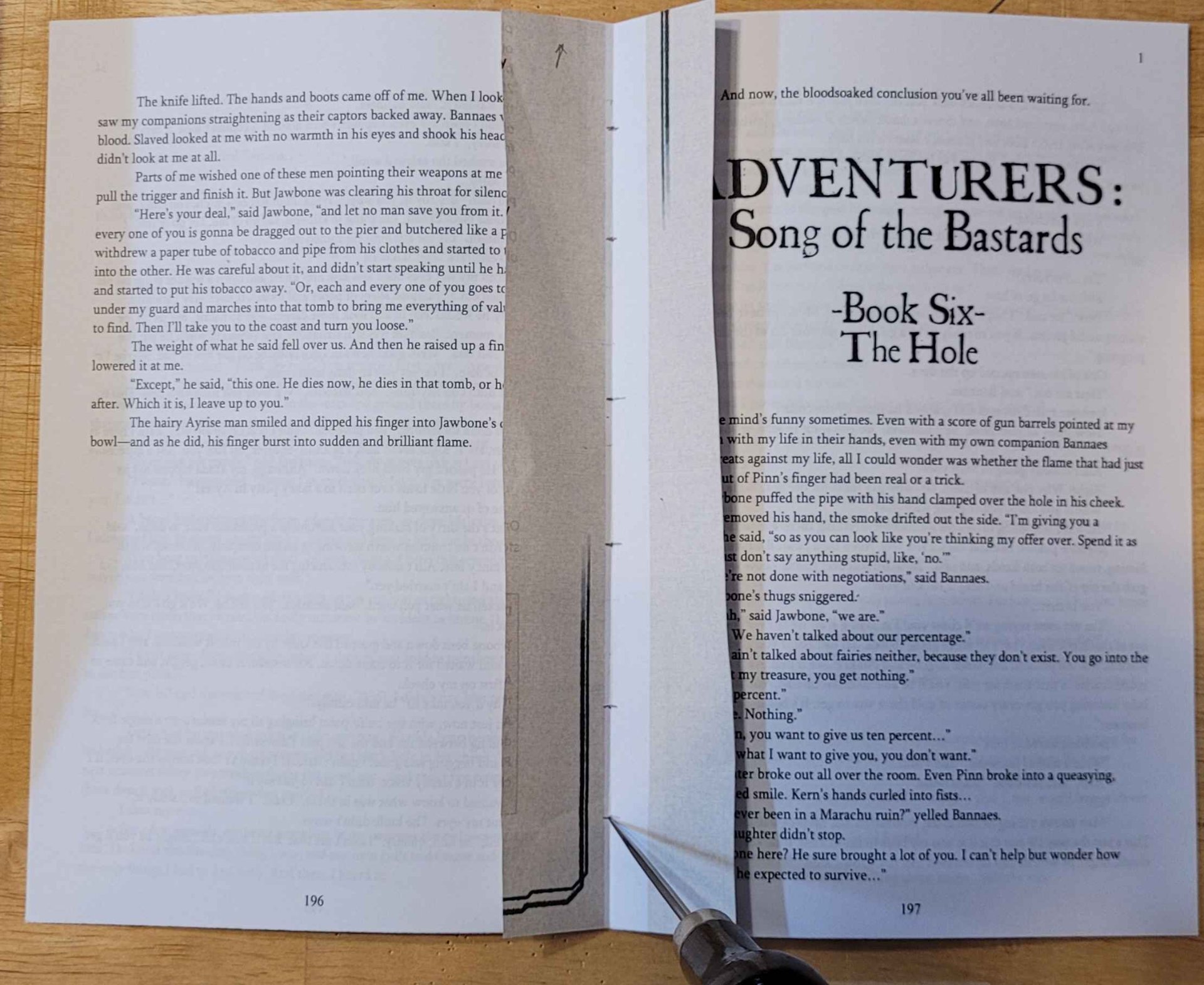I write science fiction, draw, paint, photobash, do woodworking, and dabble in 2d videogames design. Big fan of reducing waste, and of building community
https://jacobcoffinwrites.wordpress.com
@jacobcoffin@writing.exchange
- 140 Posts
- 510 Comments

 2·6 days ago
2·6 days agoThanks, I’ll definitely include that kind of dock/railings, still figuring out how to add greenery. I might shuffle the buildings around to make some room for a park

 2·8 days ago
2·8 days agoThis is really cool! I really appreciate the history and the way they changed things around them, along with changes in the way they’re perceived. I also think the distinction between the sort of black box device and the focal thing, directly used and serviced by people, is worth considering.
I’m optimistic that solarpunk as a genre might be able to help with the aesthetic appreciation of modern windmills at least. They show up frequently in solarpunk art (though almost more often in the form of altaeros temporary windmill blimps):





I even included one in a scene of a ship at sea:

Its cool to think that the aesthetics of an optimistic genre/movement could help sway the culture in a way that helps support windmills. I also really like the author’s suggestions for education possibilities, helping people engage with them, feel a sense of ownership or pride in them, if they are so hard to ignore.
So this is a question that’s been in the back of my mind for awhile while seeing celebrations of dams being removed, no worries if you don’t want to be the one to answer it.
I think I understand the extent of the damage caused by the implementation of dams, but I guess my impression had been that that damage was done, and there wasn’t much of a timeline on fixing it. Like, after eighty years or so, are there fish still trying to get past it?
At the same time, we’re struggling (failing?) globally to get away from fossil fuels quickly enough to avoid the worst of climate collapse. It seems like hydro is one of the more reliable green power sources, and is compatible with old grid infrastructure that counts on fairly consistent power so there’s less than has to be overhauled in order to just keep using hydro for awhile longer.
So at first glance, it seems like new solar and wind etc production would be better prioritized in replacing oil, coal, natural gas. Prioritizing replacing hydro feels like letting the perfect be the enemy of the good.
I haven’t seen that discussion anywhere, so I genuinely expect I’m wrong about that, but I’m wondering why.
 2·11 days ago
2·11 days agoThank you!! I very much want to ground the campaign (and solarpunk fiction in general) in worthwhile, usable information, at least to the extent that I can learn/present it accurately! I’d very much like to help people learn about real-life illegal dumping tactics, watersheds (and how they’re frequently split by borders, and their importance to humans and habitats), and getting to add a basically-functional understanding of soil testing (possibly just minus sending samples away for a lab, unless we use drones for that) is a great opportunity.
I’m really looking forward to seeing how they’ll investigate - will they focus on old records? Oral histories from locals who were around at the time? Scientific test kits of modern soil? Some combination? Will they consider erosion and the sites’ proximity to the town’s three watersheds to narrow their options? Will they think of something completely out of left field and leave me scrambling to provide useful info?
 5·12 days ago
5·12 days agoI’m still working on the adventure module for Fully Automated! but I’ve definitely slowed down a bit. I know someone who does environmental restoration IRL so I want to work with them to add more information on testing sites for contamination, and to maybe try and build out a minigame around it. Then I have to write up one set of characters (build out descriptions and personalities and goals for them) and then go through and start adding all the game mechanics stuff. Right now, the campaign is essentially system-less. You could drop it into anything from GURPS to FATE but you’d have to work out the character stats etc that come into play when the dice start rolling. My goal is to stat out all the characters I’ve written descriptions for (which in FA includes a bit more history than I’ve currently got for some of them) and to script the handfull of possible combat encounters.
Outside of the game, I’ve finished a photobash of a solarpunk cargo ship and been doing research on other possibilities for solarpunk shipping. I’ve also had some awesome discussions here on slrpnk.net about things folks would like to see in scenes of ships, boats, and coasts, and about what they’d like to see in depictions of cities in wet areas (which many cities are or will be).
Most of my solarpunk projects start with a sort of input-gathering stage these days.
I’ve also been putting together a list of parts from cars which can be used in other (hopefully more solarpunk) ways. This is part of my ongoing attempts to get more reuse in solarpunk media - just trying to make including it easy for writers and artists.
So that’s it, a lot of discussion, one bit of art, and some incremental progress on the campaign.

 3·14 days ago
3·14 days agoNice! I’ll check that out!

 4·14 days ago
4·14 days agoThanks, that makes sense on both topics, they’re definitely going on the list!

 4·14 days ago
4·14 days agoThat’s a good list, thank you! I have a couple questions you might be able to answer:
Could you elaborate on the relays? I don’t know anything about them yet (in their intended use or alternatives). Though I am reading up on them.
I know there’s a some benefit in running 12v appliances (intended for campers) with solar panel setups because you don’t have to convert from DC to AC then back to DC at the appliance. Would that work for just using a car’s AC unit to cool a room, or are they built too specific to a car or not efficient enough to justify the work?
Thank you!!

 3·14 days ago
3·14 days agoThat reminds me - inside the rubber squeegee part is a long thin strip of good quality spring steel. Lockpicking folks like it for making tools, diy gun folks sometimes use them to make the extractor. I honestly don’t know what to use the rest of the wiper for.

 5·14 days ago
5·14 days agoThis is a great list with a bunch of stuff I wouldn’t have thought of - the transmission reuse is a cool idea!
I think some LED headlights are goood for growing plants. I remember some local news panic piece from years ago about how criminals were stealing headlights for their grow ops. A quick search online confirmed they work fine (probably not worth stealing though) and this post I think suggested a couple other car parts alternative uses I’ll have to go back and get later: https://www.rollitup.org/t/is-it-possible-to-convert-a-headlamp-into-a-grow-light.496815/
Thanks again!

 3·14 days ago
3·14 days agoThat’s a great example, thank you!
Oh, one more to consider: Reckoning Press is more climate fiction than explicitly solarpunk, but it was one of the things that got me to give solarpunk a chance.
Ecotopia is a fun one because it hits all the notes but predates the genre.
Murder in the Tool Library is a favorite of mine because the setting is awesome and aspirational while feeling real and human, and because the murder mystery plot is a change from the usual ecofiction.
The solarpunk TTRPG Fully Automated! is free (libre and gratis) and has several sections devoted to its setting and worldbuilding that helped me understand a bunch of solarpunk concepts by seeing them in practice and to start thinking much bigger with my own fiction. It also has some good advice on creating engaging plots in an aspirational solarpunk setting where a lot of the usual problems have been solved.

 2·17 days ago
2·17 days agoThat’s interesting, even going with modern tech, it’s a neat answer to preserving darkness. Military-grade passive night vision with the analogue tubes are ridiculously expensive but you wouldn’t need them just for walking around - simple infrared spotlight goggles are way cheaper, and probably lighter, especially if you remove extra binocular features. They could also be assisted by infrared streetlights if those wouldn’t mess up other animals. Downsides: I don’t think walking while wearing them would be fun, your depth perception and field of view takes a hit with most designs, and slow update of the screen can be disorienting. They’re also more complicated to make than flashlights.

 4·18 days ago
4·18 days agoThat’s an interesting idea - instead of carrying a flashlight you might carry an RFID transponder. They’d need to not be linked to any personal records (such as purchase) to protect anonymity and prevent tracking. And a personal flashlight might still be useful.
I’m not sure I love the idea of lights flicking on, identifying where I am to someone waiting in the dark. Maybe it would turn on lights for a block length on the street or something? I’m also wondering if the reduced on-off cycling would wear out lights faster and, if so, how replacing them more often stacks up to more energy spent running them all the time.
Still it’s an interesting compromise position on the light pollution situation.

 8·18 days ago
8·18 days agoThis is really cool! It sounds like it’s operating a bit like the Grain De Sail II carrying high value cargoes (campaign and cognac) which probably offset the somewhat higher operating costs. The Grain De Sail at least was transporting French wines to the US on one leg of the journey and raw coffee and cocoa for processing in Europe on the way back (I think another article was claiming they were planning to transfer aid supplies from the US to ports south on some runs but this article doesn’t mention it).
It seems like sail ships might still be viable for some of what they were traditionally used for - luxury goods and necessities that could only be acquired elsewhere. Container ships made it profitable to ship everything and more and more I’m wondering if that’s part of the problem.
Also I love all the upgrades and improvements they’ve made to sail ship designs for safety and to reduce the number of crew they need. These things are exactly the kind of anachronisms I feel like we’d see a lot of in a solarpunk world.

 5·20 days ago
5·20 days agoThe question of how to make migrations as pleasant as possible and rebuild as much of the physically embodied culture that was left behind as possible is one that is very relevant right now, so I would love to see you make a postcard of a migrant town, if you don’t already have one. If you can show how even migration can be a place of solarpunk joy, then suddenly the people of New Orleans do have a realistic joyful future despite the bleak prospect of evacuation.
This is a heavy topic with some pretty high stakes but it’s going on my list. You’re right that it’s something worth rendering, it’s art we might need, though TBH I hope someone better qualified than me gets to it first.
If you’d like to discuss how these places and experiences should be represented sometime, I’d definitely be interested. I know I’m usually unqualified to make these scenes (aspirational fiction requires so much more knowledge to do well and solarpunk scenes often involve a terrifying mix of civil engineering, history, cultural knowledge, plant knowledge, city planning, accessibility outreach, vehicle infrastructure, and more) but I’m profoundly unqualified to say much of anything about the experiences of refugees and migrants. That’ll be something to work towards through research and conversation, and perhaps to carefully reference in small scenes in prose fiction etc at first. References to Little New Orleanses and similar neighborhoods seem like a good place to start, with more detail in time.
Thanks for talking about this stuff with me. I really appreciate it!

 4·20 days ago
4·20 days agoThat’s something I’ve been wondering about - I live in a place with lots of ledge to anchor foundations to (or to get in the way of basements, depending on your situation and budget). I know skyscrapers drive in huge piles for support which I think aims for that supportive material underground? I know from researching bunkers that in other places the ground is kinda moving steadily, which can roll or twist unprepared or poorly designed structures. I’ve seen that New Orleans for example has some skyscrapers but just having them doesn’t necessarily mean building them is a good long term plan and that the ground will support those kind of structures.

 3·20 days ago
3·20 days agoThis is so cool! Thank you - this definitely gives me a place to start











Yeah this painting is awesome